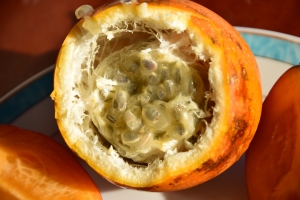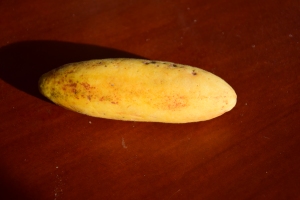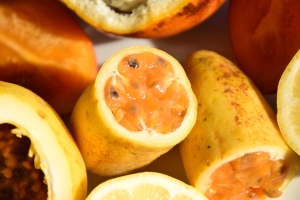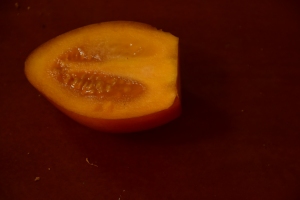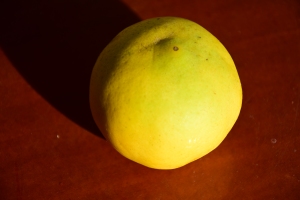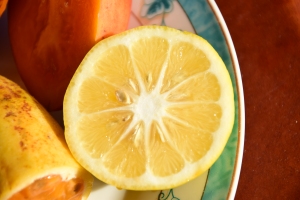Travel to The Caribbean to backpack, study, intern, volunteer, work,
or live as a digital nomad, expat or emigrant?
Backpacking through the Caribbean
- Only on the somewhat larger islands such as Cuba, the Dominican Republic, Jamaica or Puerto Rico you can backpack or make a tour around. Other than that, you can go island hopping through the Caribbean mainly by air.
- Characteristics: special atmosphere, super-relaxed, not really budget-friendly (except for the bigger and Dutch islands) but nice living.
Traveling through the Caribbean
- You can really only travel through the Caribbean by (cruise) ship or sailboat. If you choose a particular island, you will soon taste the local island atmosphere and your daily worries will seem very far away.
- Nature and island spotting: beaches of Anguilla, Antigua or the Turks & Caicos Islands, nature on St Lucia or Dominica, the underwater world of Bonaire or the Cayman Islands, the volcanic environment on St Eustatius or St Kitts and Nevis.
- Animal spotting: dolphins, iguanas, hammerhead sharks, rays, manatees, sea turtles, whales.
Internship on a Caribbean island
- Internship sectors: health care, education and tourism, among others.
- Internship cities and islands: Aruba, Bonaire, Curacao, Dominican Republic.
- Learning skills: communication, empathy, flexibility.
Studying on a Caribbean island
- Studies: in principle, forms of higher education can be found on all islands, the number of subject areas may be limited.
- Study cities and islands: Kingston (Jamaica), San Juan (Puerto Rico), Santo Domingo (Dominican Republic), St. Croix (Virgin Islands), Willemstad.Learning Spanish: Cuba, Dominican Republic.
Volunteering on a Caribbean Island
- Volunteer projects: particularly in the areas of conservation, medical care and social development.Animal projects: especially protection of coral, fish species and pets.
- Characteristics: volunteering possible from 1 or 2 weeks to several months.
Working on a Caribbean island
- Jobs: paid temporary work can be found mainly in tourism and hospitality.
- Work culture: varies by island and sector but in some sectors it is hard work, the time difference with Europe can affect working hours as well as the temperature.
- Work skills: commitment, empathy, patience, flexibility.
Working as a digital nomad on a Caribbean island
- Favorite cities and islands: Antigua & Barbuda (visas), Barbados (visas), Bermuda (connection, vibe), Dominica (visas, nature), Jamaica (livelihood), Netherlands Antilles (language, visas).
Living on a Caribbean island
- Language: Six official languages are spoken on the Caribbean islands: Creole (Haitian), English, French, Dutch, Papiamento and Spanish.
- Favorite islands: Aruba, Bonaire, British Virgin Islands, Curaçao, Grenada, Dominican Republic, Cayman Islands, St Lucia , Turks & Caicos, St. Croix, St.Kitts and Nevis.
- Living climate: healthy life, warm weather all year, good air quality, relatively high political freedom.
- Characteristics: limited crime (except on some islands or locations), tax favorable, however, many islands are not very suitable for limited budgets, transportation between islands is often by air, good internet.
- Health care: varies by island but in general, serious accidents and illness will require flying to the US or your home country. Insurance: seek advice on insurance policies that provide sufficient coverage for proper care and also repatriate in case of emergency.
Supporting content
Snorkeling abroad: what is it, where is the best place to go, and are you insured?
- What is snorkeling abroad?
- Why should you go snorkeling abroad?
- What do you need and what should you take into account when you go snorkeling?
- What are the risks when practicing di...
Kom werken als leerkracht Nederlands binnen een wereldwijd netwerk van Nederlandse en internationale scholen Wat hou je er aan over?
- Improviseren
- Ervaring met lesgeven en werken in een andere cultuur
Wat neem je mee?
- Ervaring met lesgeven
- Langere tij...
- What is paid work abroad?
- Why should you go to work abroad for pay?
- What do you need if you want to work abroad?
- To what extent are you insured for risks when doing paid work abroad?
- What are the most popular countries to do paid work abroad?
Learning French abroad: what is it, why should you do it and what is the best place to go?
- What is a French language course?
- Why should you learn French and take a French language course abroad?
- What do you need or can you do to learn a language and take a language course...
Learning Spanish Abroad: What is it, why should you do it and where should you go?
- What is a Spanish language course?
- Why should you learn Spanish and take a Spanish language course abroad?
- What do you need or can you do to learn a language and take a language course abro...
Pages
Main content and contributions for activities abroad
,,,accommodations, adventure activities, courses, internships, jobs and volunteer projects
...to help another, travel with care, work together , learn
........Read more  Activities abroad: home page
Activities abroad: home page
From language courses to gap year abroad, from work experience to volunteering abroad, from paid work to internship abroad, from mountaineering to diving and from backpacking to travel around the world
What social activities can you do abroad?
- Opportunities are found in the areas of helping, learning or studying. You can get involved to volunteer in a social project at a school in Africa, Asia or Latin America. You can get involved in nature, in a project with animals or cleaning the sea or beaches. Those who want to learn more can choose for example a language course in Latin America, Spain or South Africa.
What work related activities can you do abroad?
- If you want to gain work experience, and/or also earn money, go and work abroad. You can combine backpacking in Australia with temporary work. You can work on campsites in Europe or bush camps in Africa. You can pretty much go all over the world to work in the hospitality industry, hotels and hostels, in the healthcare sector or for example at a diving school.
What sports activities to do abroad?
- Have you ever thought of mountain biking, rafting (going down a wild river on a raft or rubber dinghy, climbing or canoeing), survival (which involves building rafts, climbing or canoeing), abseiling (descending a rock face while secured to ropes), zip-lining (whizzing down a cable), canyoning (starting at the top of a river and then climbing, swimming, diving down the bed) or caving (scrambling, wriggling and crawling through caves and crevices)?
- Maybe you feel more comfortable on a bodyboard (on a half-wave surfboard, you surf the high waves lying down-with flippers), on a hang glider or while paragliding (with a parachute you float down a mountain or dune), hydrospeeding (on a bodyboard with flippers and a wetsuit on you go down a wild river via rapids) or Tiefschneeskiing (racing down through powder snow)?
Check the pages below for more activities and inspiration and where to go and how to arrange it
 Activities abroad: for gap year, sports, travel and outdoor abroad
Activities abroad: for gap year, sports, travel and outdoor abroad
Bundled content for gap year, sports, travel and outdoor abroad
 Activities abroad: for languages courses and learning a language
Activities abroad: for languages courses and learning a language
Bundled for languages courses and learning a language
 Activities abroad: for volunteering and social work abroad
Activities abroad: for volunteering and social work abroad
Bundled content for volunteering and social work abroad
 Activities Abroad: for work and intern abroad
Activities Abroad: for work and intern abroad
Work Abroad, Work Experience Abroad & Intern Abroad
 Themes: home bundles per activity abroad
Themes: home bundles per activity abroad
Bundels bundles per activity abroad
 Themes: main theme pages for emigration, moving and living abroad
Themes: main theme pages for emigration, moving and living abroad
Main theme pages for emigration, moving and living abroad
 Worldsupporter: home pages and bundles
Worldsupporter: home pages and bundles
Main content en main content bundels on WorldSupporter
- 1601 reads
 ORGANIZATIONS
ORGANIZATIONS
Check sectors and organizations related to: 'The Caribbean'
Since 2000, Wereldstage has been arranging internships, project placements and graduation assignments for students in Curaçao. Over the years, various other programs and services have been added, such as gap year programs, volunteer job placement, job placement and the guidance of professiona...
Al sinds 2000 regelt Wereldstage meeloopstages, projectstages en afstudeeropdrachten voor studenten op Curaçao. In de loop van de jaren zijn daar verschillende andere programma's en diensten bijgekomen zoals tussenjaarprogramma's, vrijwilligerswerkbemiddeling, werkbemiddeling en de begeleidin...
Pages
Bundled content, suggestions, stories and tips about organizations and their products and services
...to help another, travel with care, work together, learn to share and inspire with
........Read more  Organizations: sector bundled for activities, animal protection, wild life care and eco-projects
Organizations: sector bundled for activities, animal protection, wild life care and eco-projects
Sectors for animal protection, wild life care and eco-projects
 Organizations: sectors bundled for activities, internships, projects and work placements abroad
Organizations: sectors bundled for activities, internships, projects and work placements abroad
Sectors: activities and work placements abroad
 Organizations: sectors bundled for activities, leisure, tours, sports and tourisme
Organizations: sectors bundled for activities, leisure, tours, sports and tourisme
Activities, leisure, tours, sports and tourisme
 Organizations: sectors bundled for business, law, services and technical
Organizations: sectors bundled for business, law, services and technical
Sectors: business, law, services and technical
 Organizations: sectors bundled for education, health, non profit, society and welfare
Organizations: sectors bundled for education, health, non profit, society and welfare
Sectors: education, health, non profit, society and welfare
 Organizations in the spotlight: home bundle
Organizations in the spotlight: home bundle
Organizations in the spotlight: home bundle
 Organizations: sector bundel NL
Organizations: sector bundel NL
Organisaties per sector
 Organizations: home page
Organizations: home page

Organizations and institutions in the field of
- Study, internship, work and volunteering abroad
- Emigration and long-term residence abroad
- Advocacy, sustainability and global citizenship
- Personal development and knowledge sharing
- 265 reads
 STORIES
STORIES
Check blogs, experiences and information related to: 'The Caribbean'
East of the Caribbean Windward Islands, out in the Atlantic Ocean, rises a unique island on coral foundations. Barbados, named by the Spanish, probably for it’s impressive bearded fig trees Los Barbados, appeared on a Spanish map in 1511 for the first time in history. Prior to this it was inha...
- Highlights of Curaçao
- Health and safety in Curaçao
- Transport in Curaçao
- Accommodation, food and drinks in Curaçao
Curaçao is part of the Dutch Antilles in the Caribbean area which also consists of islands like Aruba ...
Wereldstap is het activiteiten- en stagebureau van Curaçao. Met een ervaren team regelen we alles voor iemand zijn of haar stage of vrijwilligerswerk en worden veel zorgen uit handen genomen. Ons doel is om een bijdrage te leven aan het internationaliseren van het onderwijs en voor meer kenni...
Pages
Bundled content, suggestions, stories and tips about the countries and destinations in the world
...to help another, travel with care, work together , learn to share and inspire........Read more
 Africa: country bundles
Africa: country bundles
 Asia: country bundles
Asia: country bundles
Country bundles of Asian countries
 Central America: country bundles
Central America: country bundles
Bundled content, suggestions, stories and tips about countries in Central America
 Europe: country bundles
Europe: country bundles
Country bundles of European countries
 Middle East: country bundles
Middle East: country bundles
Country bundles of the Middle East
Abu Dhabi, Dubai & United Arab Emirates - Bahrain - Egypt - Iran - Iraq - Israel - Jordan - Kuwait - Lebanon - Qatar - Saudi Arabia - Syria - Turkey - Yemen
 Oceania & The Pacific: country bundles
Oceania & The Pacific: country bundles
The Australia & Oceania/Pacific continent consists of many small island countries and islands territories.
List of countries:
- Australia
- Fiji
- Kiribati
- Marshall Islands
- Micronesia
- Nauru
- New Zealand
- Palau
- Samoa
- Solomon Islands
- Tonga
- Tuvalu
- Vanuatu
 South America: country bundles
South America: country bundles
South America: country bundles
 The Caribean: country bundles
The Caribean: country bundles
Country bundles of Caribean countries
 Habits, food customs and philosophies: country bundles
Habits, food customs and philosophies: country bundles
Habits, customs and philosophies from all around the world
 The best time and worst time to go abroad: countries bundles
The best time and worst time to go abroad: countries bundles
What is the best time to go abroad?
What is the worst time to go abroad?
- 929 reads
Backpack, travel, intern, live, study, volunteer or work in the Caribbean Antigua and Barbuda - Aruba - Bahamas, The - Barbados - Bonaire - Cuba - Curaçao - Dominica - Dominican Republic - Grenada - Haiti - Jamaica - Puerto Rico - Saba - Saint Kitts and Nevis - Saint Lucia - Saint Vincent and...
Some general guidelines to stay safe while visiting Curaçao General safety
- Generally speaking, Curaçao is considered to be safe, but robberies and petty crime happen on occasion.
- Watch out for pickpockets. More thieves are active on busy places like the busstation and...
Insurances for backpacking, living, traveling, studying, volunteering and working abroad Fair, special and sustainable insurances
Selected theme pages with blogs and contributions of WorldSupporters about travel, work and living abroad per country
When traveling is your hobby and want to keep your personal stuff safe in the airplane, train, bus, boat or when u sleep in a hostel. Use a travelsafe! Find out what kind of travelsafe is usefull for you, click here!
Ga je zwemmen in de zee? Check of je zonnebrand het UV-filter oxybenzone bevat. Zo ja, gebruik het dan niet. Dit uv-filter heeft schadelijke effecten op het koraal dat het toch al zwaar heeft door toerisme, overbemesting, afvallozingen en visserij. Op Bonaire wordt er al actief gewaarschuwd door de ...
- Je vindt het leuk om mensen enthousiast te maken voor de bestemming en deelt graag je kennis.
- Je zorgt dat reis volgens planning verloopt en bedenkt oplossingen waar nodig.
- Je werkt samen met lokale agenten, chauffeurs en gidsen.
Locatie: Diverse landen W...
Stories, tips and experiences from specific countries in The Caribbean
Antigua and Barbuda - Aruba - Bahamas, The - Barbados - Bonaire - Cuba - Curaçao - Dominica - Dominican Republic - Grenada - Haiti - Jamaica - Puerto Rico - Saba - Saint Kitts and Nevis - Saint Lucia - Saint Vincent and the Grenadines - Sint Eustatius - Sint Maarten - Trinidad and Tobago
Recipes from Latin America or with a Latin twist by WorldSupporters - Bundle
Recipes from Latin America shared by WorldSupporters
 Recept: Buñuelos de Nicaragua
Recept: Buñuelos de Nicaragua
This recipe is traditionaly made around the holiday season, it compares to the Dutch "Oliebollen". It is a sweet, deepfried treat made from Yuca's (a cassave root) served with sugary topping called miel (honey) made from water, sugar and cinnamon.
Peel the yuca (note this is not easy, you need a sharp knife and a bit of persistence) then cut the yuca up in smal pieces and put them in the blender. Add the quarter cup of water and mix until it is a smooth mush, add the crumbled cheese and mix it in well.
Heat a pot with olive oil, while doing that put on a pot with the cups of water, sugar and cinnamon stick in it. Make sure it is kept just below boiling point.
When the oil is heated take two spoons to shape a little bit of the dough into a ball every time. Deepfrie them until golden brown. Let them drip of and serve while still hot with the sirup over it, enjoy!
Ready In: 50 min.
Ingredients:
- 1 big yuca (cassave root)
- Salty cheese (feta would do)
- 1/4 cup of water for the dough
- 1 Cinnamon stick
- 1.5 cups of sugar
- 3 cups of water
 Recipe: Classic Guatemala Enchiladas
Recipe: Classic Guatemala Enchiladas
You’ve probably heard of enchiladas before, but you might be thinking about a rolled tortilla filled with chicken, or beef, topped with melted cheese and sauce, which is more like a Mexican enchilada. These enchiladas -Guatemalan enchiladas- are made by topping a fried or toasted tortilla (called a Tostada) with lettuce, beets, onions, tomato sauce, fresh parsley, an egg slice…and the last touch, a sprinkling of dried Guatemalan cheese (Queso Seco). Parmesan cheese can also work. Sometimes people also add ground beef or chili spice.
Buen Proveche!
- For more nice Guatemalan recipies, please visit www.crossroadscommunityfoodnetwork.org
Ingredients for 25 Enchiladas:
- 25 tostadas
- 2-3 lbs fresh lettuce
- 6-8 red beets
- 6 boiled eggs
- 4 dill pickles (optional)
- 2 sliced onions (optional)
- 1 large bunch of fresh parsley
- pepper, salt
- Queso Seco (dry cheese)
- Sauce: 3 diced onions 5 diced tomatoes
Procedure:
- Some of the steps need to be made a day ahead, once these ingredients are ready you can start assembling the Enchilada. Those ingredients are the filling, the onion escabeche, vegetable mix and tomato sauce. The recipe calls for 1 head of garlic, which you will use in the filling recipe, in the vegetable mix recipe and the tomato sauce recipe. Feel free to adjust the garlic amount to your own personal taste.
Filling:
- Chop one of the red bell peppers, with half of the green beans, half of the carrots, half of the chayotes, half of the garlic head (or your adjusted amount of garlic), and half of the cabbage. No onions, beets, celery or tomatoes here.
- Add a bit of oil to a large hot pan, and brown your beef.
- Season with salt and pepper and add all the chopped vegetables.
- Let it cook until all the liquid has evaporated.
Onion “Escabeche”
- Cut onions into quarters, and then slice and separate the pieces.
- Mix olive oil, vinegar, salt and pepper to taste.
- Add onion rings and let them sit for at least 24 hrs in a covered jar.
Vegetable Mix:
- Julienne or chop the rest of the vegetables you had left over. You’ll use the remaining carrots, chayotes, garlic (to taste), and cabbage this time you’ll include the beets.
- Cook them in boiling water, with the 2 bay leaves, except for the beets. Those are cooked in a separate pot. Don’t over cook them, it should only take a few minutes.
- Mix the vegetables, and let them cool.
- Refrigerate and mix with the onion escabeche.
- Let this mixture rest for at least half a day.
Tomato Sauce:
- Cook the tomatoes, celery stalks and remaining red bell pepper and garlic (to taste).
- Pure in the blender, return to the pot and season with salt and pepper to taste
Assembly:
- Take a tostada, cover with a lettuce leaf.
- Top the lettuce with the vegetable and escabeche mix.
- Top this with the beef filling.
- Next, top with tomato sauce.
- Decorate with a few sliced hard boiled egg, sprinkle with dried cheese, and chopped cilantro.
Ready In: 0 min.
 Ecuadorian Fruits :D
Ecuadorian Fruits :D
Hola Amigos!
Fruits are one of the main parts of a healthy diet, but also just simply DELICIOUS. Well, if you want a good choice of fruits, head out to South-America. It's FRUIT HEAVEN! The fruits here are sweet, fresh, without travel pollution and cheap, what else do you want? Well, today for you, my fruit amigos, I will describe some typical fruits which you can find in Ecuador and other parts of South America. I will not talk about the easily recognisable ones like pineapple, mango, grapes etc, but about the ones I was super curious about. Fortunatelly, there are so many that I can't even describe all of them so you'll still have to go on an adventure yourself. Hopefully, however, this blog can help you to get through an Ecuadorian market a little bit easier than I did, if you happen to be at one sometime.
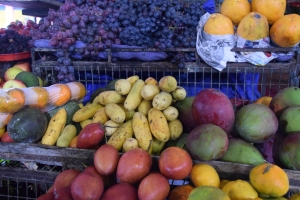
Maracuya (E: Passion fruit)
YES! Let’s start with my ultimate favorite; the maracuya. Even though it looks totally different from the purple small passion fruits we get in Europe, it tastes somewhat the same and is a lot bigger (so better! ;)). This one is yellow with sometimes a little bit of green, and feels quite hard on the outside. To find the best ones on the market, I always pick the biggest and heaviest ones! They usually contain the most seeds. To start eating, either cut it through the middle and eat both halves, or take the top side off and use the maracuya as a bowl and just scoop out the inside. Some people prefer to swallow everything without chewing, however, I like the texture of the seeds since it makes it a little bit crunchy so I prefer to chew on it.
Use: mostly used for juices since it’s a very sour fruit. But if you’re like my sisters and I, you’ll probably prefer to eat it like this!
Price: 5/6 for 1 dollar
Granadilla (E: Sweet passion fruit)
Another passion fruit, yay! It’s an orange fruit with some light brown speckles on it and can be found at most markets. While the maracuya is sour and has a pretty strong flavour, the granadilla is a lot sweeter and the texture is even more like spawn. It might look a bit disgusting at first, but the taste makes up for it. If you like both, but find the granadilla not strong enough (flavour wise) and the maracuya to sour, then do like I do sometimes and mix them together in one of the fruits to get a combination of the two flavours
Use: I think just for eating, and you can put it in some dishes too.
Price: 4/5 for 1 dollar
Taxo (E: Banana passion fruit)
Yes, there is another one for you, passion frutas lovers! Where the name comes from? Well, I think you can take a guess while looking at the picture. The fruits are usually yellow/orang and quite soft when you touch them. Even though I cut it differently in the picture, I think the best way to cut and eat it is longitudinally. The texture is a little bit more tough (and so are the seeds, better just swallow them) than that of the maracuya and granadilla, and therefore it’s also a little bit more difficult to eat, but the flavour resembles that of the maracuya the most. Again it’s quite sour and it has a tangy taste.
Use: it can be eaten raw (although that is rarely done), but it is mostly used for juices and ice-cream
Price: 5/6 for 1 dollar
Tomate de árbol (E: Tree tomato)
Tree tomato is a strange fruit of which I haven’t really figured out how to eat it yet, except for just drinking it as a juice with a lot of sugar. It’s a kind of red-orange fruit that is more oval-shaped than a tomato, but when you open it, you do realize why they call it tomato anyway. When you eat it fresh, the fruit tastes very sour and kind of like a mix between tomato and papaya. I wouldn’t recommend doing this. However, the fruit can be used for juices and desert when boiled and mixed with sugar. In that way it still is a flavour I’m not used to, but it tastes quite good.
Use: Juices/desserts/sauces
Price: 6-8 for 1 dollar
Lemons/limes/oranges
I still haven’t been able to figure out which one is which. While the oranges are quite clear and have a bit of a dirty orange-green look, there are also other oranges that again look different. The same in terms of lemons and limes. There are so many that I can’t even start describing them all. I recommend you just buy and try some to find out for yourself!
It’s BANANAs!
There are several types of bananas in Ecuador (what else would you expect in a tropical country) of which I will describe the most common ones:
Platana Verde (E: Green plantain)
This banana is HUGE and NOT to eat raw. It’s an unripe green plantain with no flavour but it has a great texture for cooking. They go crazy for it here and you can find it everywhere. You can try to prepare it yourself by cooking and baking it, or by making patacones (one of the favorite dishes here), but I recommend you to just go out on the streets and get some ready made, because it’s a lot easier.
Use: Many dishes, but not raw
Price: 8 for 1 dollar
Platano Maduro (E: Ripe plantain)
The ripe version of platana verde. Again it’s huge, but this time it has a yellow colour due to the ripening process. Now it’s a lot sweeter, but still not very good to eat raw. They are eaten grilled, from the oven, with cheese, fried and they taste very good. While this one is a bit easier to prepare yourself, I would still recommend to buy it on the streets (you can see people selling them outside from the grill while you walk on the streets), since they know how to prepare it the best.
Use: many dishes but again not raw
Price: 8 for 1 dollar
Orito (E: Baby banana)
Orito is a tiny banana (about 1/3rd of a normal one) and contains just as much, if not more, flavour but more concentrated. It’s full of sugar and delicious to eat and the best of all, they are super super cheap. I use them to cook banana bread, or I eat them raw. They contain a lot of sugar though so don’t eat too many or you’ll start bouncing all over the streets.
Use: raw! and I use it for banana bread
Price: depends, but usually a bunch (about 15-20) for 1 dollar
Platano Rosado (E: Red banana)
Platano rosado is a banana with a red/purple-ish skin. It's full of antioxidants, beta-carotene and vitamin C and therefore very healthy. Additionally, many more health benefits are attributed to it, although I always remain a bit sceptical. What I know for sure though, is that these bananas are so sweet and delicious. I have eaten the big ones (I heard there are also small ones) and even though it was a bit too much for me at one, since I'm not very fond of bananas, it was soooooo good. So I would really recommend you to eat one if you find them :)
Use: raw, just peal it like a normal banana
Price: Around 5-10 for one dollar
Mora (E: blackberries)
Blackberries in Ecuador are very different from the ones I’m used to in the Netherlands. The ones here are more sour and not very juicy, but they still taste good. They look basically the same, but are a little bit bigger and generally quite ‘expensive’ compared to other fruits.
Use: juices, ice-cream
Price: 2 dollars a pound
Next to these frutas, there are of course many others like mango, pineapple (piña), strawberries (fresas), apples (manzana), watermelons (sandia), grapes (uvas), coconut (coco), guanabana, dragon fruit (pitahaya), prickly pear (tuna), papaya and so on. Maybe I'll describe some of the smaller fruits (tamarindo, some kind of small mango and another thing) which are eaten raw as snacks on the street in one of my next blogs or vlogs so if you want to know about that, make sure to follow me!
I hope this blog helped you to get an idea of Ecuadorian fruits! At least I got to eat all of them while writing this haha. Have fun trying them out too if you get the opportunity!
- this is a blog adjusted from my personal website https://hannahchanstravels.wordpress.com/2017/09/25/ecuadorian-fruits/ -
 Recipe: Guacamole
Recipe: Guacamole
Guacamole: easy, quick, delicous, healthy and vegan! Who doesn't love it? You can dip your nachos in it, spread it on toast or put it as a topping on your rice bowl!
Here's how I make mine:
Ingrediënts
- 2 Ripe avocados
- Jalapenos or chili peper to preference of heat (I prefer fresh, but you could use chili powder)
- Half a (red) onion or a small shallot
- 2 Garlic cloves (or less, or more)
- Koriander
- 1 Lime
- Salt and black peper
- Ground cumin
Unlike many others, I prefer my guacamole without tomatoes because I feel it can make it to thin/watery sometimes.
- Slide open your avocados, take out the pit and put the flesh in a medium size bowl.
- Smash the avocados with a fork until desired consistency (I like mine chunky and not too smooth)
- Chop half the onion or the small shallot and the garlic in very fine pieces.
- Add the onion and garlic together with a pinch of salt and black peper, a pinch of ground cumin, a tablespoon of chopped koriander leaves, and the juice of half a lime.
- Mix well
- Add the jalapenos or chili peper to preference of heat
- Taste to see if you need more of anything: Salt? Lime? or a bit more heat?
That's it! And so easy.
Let me know when you try it! What is your guacamole recipe?
Ready In: 7 min.
 Recipe: Peruvian Lomo Saltado
Recipe: Peruvian Lomo Saltado
The first peruvian recipe that I learned how to make is 'Lomo Saltado'. This signature dish consists of meat, rice, fresh patatoe fries and various herbs and spices that are characteristic for the popular Peruvian kitchen. Try it out and discover the rich flavours for yourself!
Ingredients for 4 persons
- 500 gr of veal
- 1 (red) onion
- 1 green pepper
- 1 tomato
- 1 spring onion
- 1 yellow aji (online or in specialised stores), or a fresh chilli
- 2 cups of rice
- 500 gr firm boiling patatoes
- vegetable oil
- soy sauce
- 3 teaspoon of applecider vinegar
- cilantro
- garlic
Instructions
Preheat the oven at 200 degrees. Clean the patatoes and cut them lengthwise. cover them with a little oil, salt and pepper and bake them in 20 minutes. Boil the rice. Then cut the pepper, onion, chilli (without the seeds), the tomatoe and the garlic in small pieces. Cut the meat into strips, let it marinate for a little while in the soy sauce, vinagre, garlic, chilli and half of the cilantro. After that, bake the marinated meat for a short period on high fire. Add all the vegetables except for the tomatoe and bake for a little more. Finally, add the tomatoe and bake for a few more minutes. Serve together with the rice, fries and top with the cilantro. Buen provecho!
Ready In: 30 min.
 Recipe: Quick and Easy - Ceviche
Recipe: Quick and Easy - Ceviche
Ingredients for 4 people :
-700g of White fish (eg. Seabass)
-8 limes
-1 onion
-2 table spoons of evaporated milk
-3-5 table spoons of fish stock (optional but highly recomended)
-Parsley
- you might put chillis if you want to spice things up
Recipe:
1- cut the onion in juliennes (thin stripes)
2- cut the parsley in really small pieces and the chili in circles (remove the seeds so its not too spicy)
3- make sure the fish does not have any bones and remove the skin, then cut it in bite size cubes
4- put the fish in a bowl, add salt and pepper to taste and the juice of all the limes. then mix it all
5- add the parsley, the chilli, the evaporated milk and the fish stock (optional) to the fish and mix
6- let it rest in the fridge for at least 10 minutes before serving
7- put the fish on a plate, then mix the onions with the juice that is left on the bowl and put them on top of the fish
Tip: for a truly peruvian style ceviche, you can put some tosted corn around the fish.
Ready In: 15 min.
Ingredients:
- 700g of white fish (eg. seabass)
- 1 Onion
- 8-10 Limes
- Chilli (optional)
- Parsley
- 2 table spoons of evaporated milk
- 3-5 table spoons of fish stock (optional but highly recomended)
- salt and pepper to taste
 Travelling in Ecuador as a Vegan
Travelling in Ecuador as a Vegan
As a vegan who loves travelling, you've probably heard that it's impossible to do it if you want to stay healthy. Well, I'm here to change that view and give you some tips for travelling as a vegan in Ecuador.
When I went to Ecuador, I was doubtful about whether I would manage to stay vegan. I had been vegan for a year, and while it was rather easy in the Netherlands, I always thought that I would never be able to keep being vegan while abroad. Nevertheless, I did it with the help of some tips/tricks.
1. Cook yourself
The easiest and best way (if you can use a kitchen) is cooking yourself. There are so many delicious recipes that contain some meat, but it's easy to substitute this meat for beans. Check out the arepas recipe on my page for example. Arepas are totally vegan, and if you combine them with vegetables and beans, very nutritious as well. The plantain recipe is also a very easy recipe for vegans which can be combined with all kinds of things. Basically, you can cook anything you were used to cooking at home as well, just check the ingredients.
2. Eating out? Ask for something specific.
This might sound strange, but it works better than asking "do you have something vegan?" or "can I have this without meat?". These questions often lead to misunderstandings, or even more questions. If you ask for rice with salad, or rice with beans or rice with beans and avocado, you will get it. Of course, in bigger or more international restaurants you might get away with asking for a dish without meat, but if you're at a bus station, or a smaller town or just local restaurants, ask for a specific thing.
3. Look for vegan restaurants
Nowadays many places have some vegan restaurants, or restaurants with vegan options. Especially in the bigger and more touristic places in Ecuador (Cuenca, Quito, Otavalo, Banos, at the coast) you might have a chance of finding vegan things. For a start, in Tena, where I stayed for 3 months, is a great vegan restaurant next to Cafe Tortuga (which also has some vegan options). It is owned by a wonderful cheff and she makes just great dishes! In Baños there is a restaurant called Healthy Food which you can't find on Google Maps, but it is near Ponche Suizo and they have many vegetarian and Vegan options. Also in Baños is Zumo, a great restaurant at which they offer all kinds of dishes, also vegan, and if you ask they might even be able to make some adjustments to the non vegan dishes. But since Ecuador is a popular travel destination, you can find many options nowadays at more international restaurants.


Food at Zumo Vegan Streetfood
Hopefully, this can encourage you and aid you in your vegan travels! Also in the rest of South America! Let me know if you have any more recommendations :)
Cheers,
Hannah
 Recipes from around the world - Bundle
Recipes from around the world - Bundle
Recipes and tips from Indonesia, Japan, Asia, Africa, Europe to South America

For a sustainable and safe travel or emigration insurance you can check JoHo's Expatinsurances.org

TOPICS : check associated topics and more activities
- Backpacking or traveling in The Caribbean: also backpacking and travel around the world
- Studying in The Caribbean: also the use of summaries and study notes
- Starting an internship in The Caribbean: also stages in het buitenland met checklists en tips (NL)
- Volunteer in The Caribbean: also sustainable volunteering, project support and volunteer opportunities
- Working in The Caribbean: also jobs, materials for teaching abroad
- Working as a digital nomad in The Caribbean: check the collection of content for digital nomads, global workers, people combining work & travel
- Living abroad in The Caribbean: use the checklists for global nomads, expats and other people moving abroad
- Being sufficient insured during your activities in The Caribbean: check fair insurances for long term abroad
WorldSupporter Theme pages for activities abroad
Intern, study, travel, volunteer, work or emigrate
 Emigration and moving abroad - Theme
Emigration and moving abroad - Theme
Emigration and moving abroad:
Blogs, tips, discussions and all about moving abroad, living abroad and emigration
 Themes: main theme pages
Themes: main theme pages
The main theme pages on WorldSupporter bundled
- 1522 reads


































